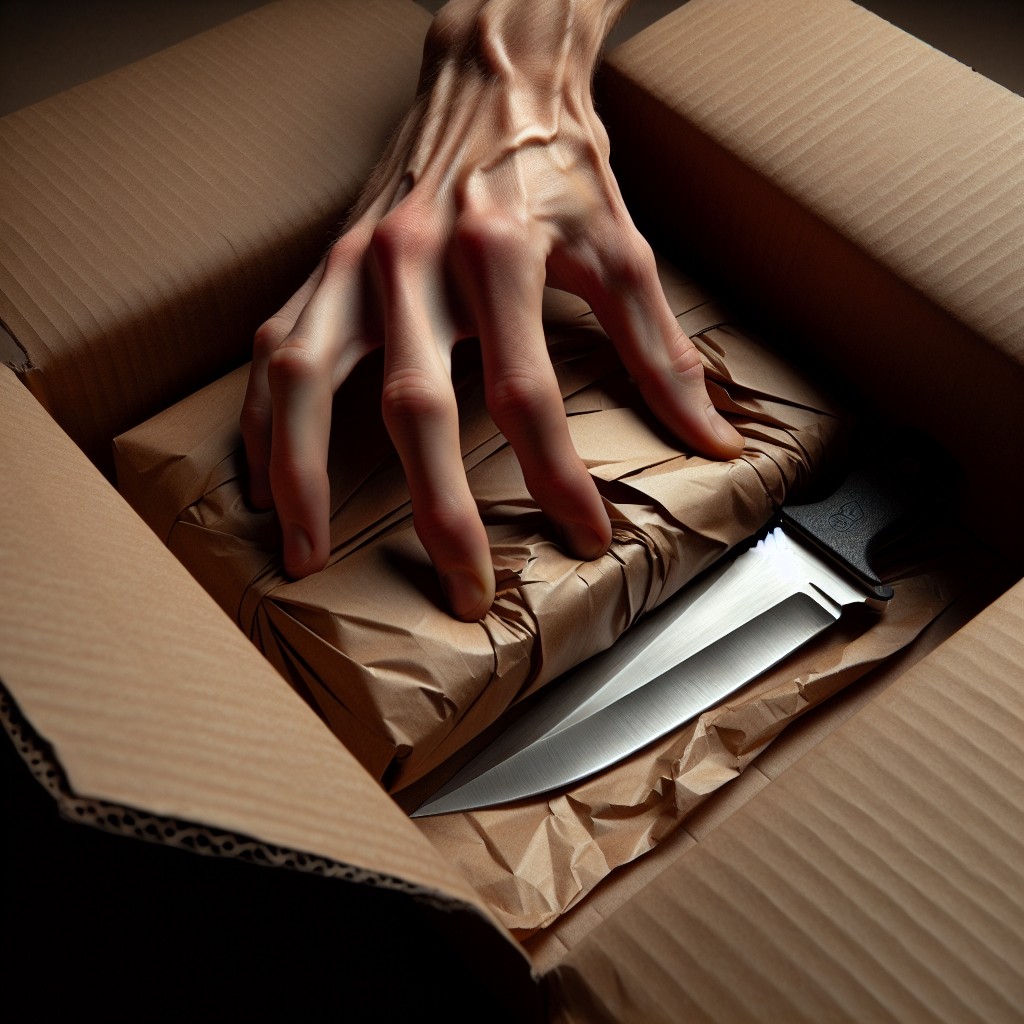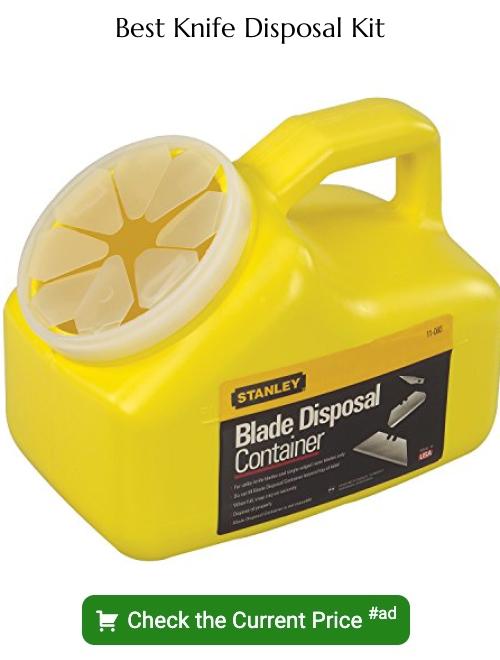Last updated on
Learn the safe and responsible methods for disposing of old or unwanted knives.
Key takeaways:
- Wrap blades with paper and secure with cardboard for safe disposal.
- Donate kitchen knives in fair condition to charity or schools.
- Take old knives to a scrap metal recycling center.
- Safely throw away knives by padding and labeling them.
- Recycle knives by identifying the material and preparing them properly.
What's Inside
Wrap Blades With Paper and Secure the Knife in Cardboard

When it’s time to part with your knives, ensuring safety is paramount. Take old newspaper or any kind of paper and wrap around the blade several times, using tape to secure the wrapping so it doesn’t come loose.
Next, find a piece of cardboard long enough to fold over the wrapped knife, creating a homemade sheath. Again use tape to firmly seal the edges. This double protection not only prevents potential injuries from exposed blades but also guards against the knife cutting through garbage bags, which can cause harm to sanitation workers.
Always keep safety first; properly secured, your knives are ready for the next step, whether that’s disposal, donation, or recycling.
Donate Kitchen Knives That Are Still in Fair Condition
While your knives may have lost their sparkle for your culinary ventures, they could be a treasure for someone else. Consider donating them to charity shops or thrift stores; these establishments welcome kitchen utensils. Another option is to contribute to communal kitchens or shelters, where the need for food preparation tools is often high.
If you’re feeling educational, schools and colleges with culinary programs frequently accept tool donations for students learning the trade. Always ensure that knives are safely transported, with the blades adequately covered, to prevent any accidents en route to their new home. Remember, by donating, you’re not only decluttering but also making a valuable contribution to someone else’s kitchen adventures.
Take Old Knives to a Scrap Metal Recycling Center
When you’ve deemed your old knives irreparable or unsuitable for donation, scrap metal recycling centers provide an environmentally friendly solution. These centers specialize in breaking down metals for repurposing, reducing the need for new material extraction.
Before you head to a recycling center, ensure that the knives are clean and free from any plastic handles or non-metal parts—some centers require this. If you’re unsure, a quick phone call to the facility can clarify their policies.
To safely transport the knives, wrap the blade securely in newspaper or cardboard, and use tape. It’s essential not to leave sharp edges exposed to protect yourself and recycling center employees.
Remember, many centers accept all kinds of metals, so this trip could be an opportunity to recycle other household items. Compile aluminum, steel, and other metals to make your visit more worthwhile and eco-friendly.
By choosing to recycle, you’re contributing to the circular economy, ensuring materials stay in use and reducing the environmental footprint of new production. Your old cutlery could very well become part of a new product, closing the loop in the life cycle of products.
How to Throw Away Your Knives Responsibly
Ensuring your knives don’t pose a risk to garbage handlers is a crucial step in responsible disposal. Start by wrapping the blade in newspaper, a piece of cloth, or bubble wrap. This dulls the edge and prevents accidental cuts. For additional safety, fix this padding with tape – duct tape is especially effective due to its strength.
Once the knife is securely wrapped, place it within a piece of cardboard and fold it around, creating a makeshift sheath. Secure this with more tape to prevent the knife from sliding out. Clearly label it as “Sharp” to alert anyone who might handle the waste.
A responsible approach demands that you also consider local regulations. Some areas have specific rules for disposing of sharp objects to minimize potential harm. Check online or call your local waste management service to ensure you’re following protocol. Remember, the goal is a safe and environmentally friendly disposal process.
How to Recycle Your Knives
Recycling knives contributes to a reduction in waste and conservation of resources. Metals used in knives, such as stainless steel or carbon steel, can be melted down and repurposed, hence preventing resource depletion.
Here are some actionable points:
- Identify the Material: Determine if your knife is made of metal that is accepted by your local recycling center; most will take household metals like stainless or carbon steel.
- Prepare for Recycling: Clean the knife thoroughly to remove any organic material or contaminants to avoid any health hazards for recycling center workers.
- Contact Your Local Recycling Center: Verify their policies regarding sharp objects. Some centers ask that knives be brought directly to the facility rather than placed in bins.
- Safety Measures: Tape the blade with heavy-duty tape, and then wrap it in cardboard or thick layers of newspaper to ensure handlers do not get injured. Clearly label the package as containing sharp objects.
- Drop-off: If required, take your knives to the center in person. Ensure they are secured in a rigid container during transport to prevent accidents.
By following these steps, you’ll contribute to the circular economy, giving your old knives a new lease on life beyond the kitchen.





